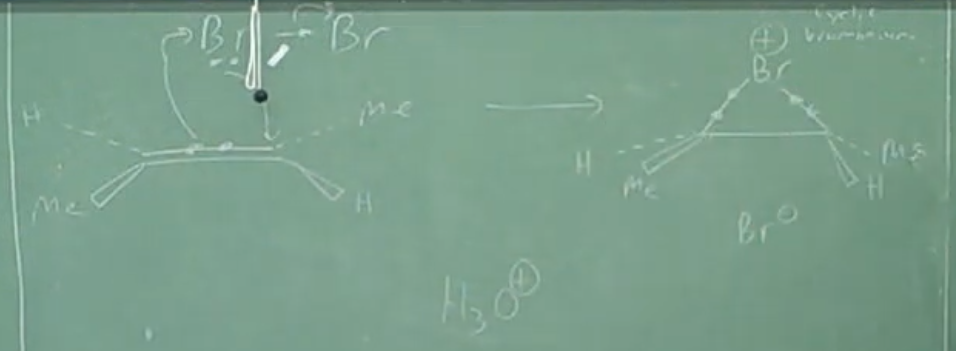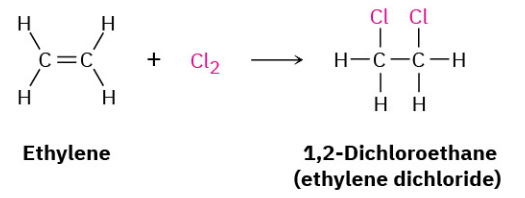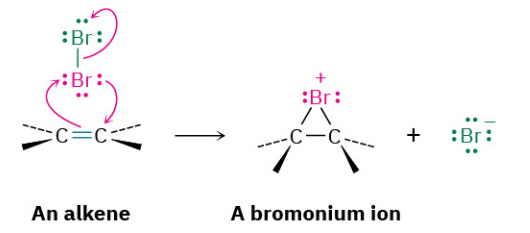Alkene Halogenation Mechanism
Provide the major products for the reaction and show the full mechanism.


Bromine and chlorine add rapidly to alkenes to yield 1,2-dihalides, a process called halogenation. For example, nearly 50 million tons of 1,2-dichloroethane (ethylene dichloride) are synthesized worldwide each year, much of it by addition of Cl2 to ethylene. The product is used both as a solvent and as starting material for the manufacture of poly(vinyl chloride), PVC, the third most widely synthesized polymer in the world afterpolyethelyne and polypropolyne. Fluorine is too reactive and difficult to control for most laboratory applications, and iodine does not react with most alkenes.

Based on what we’ve seen thus far, a possible mechanism for the reaction of bromine with alkenes might involve electrophilic addition of Br+ to the alkene, giving a carbocation intermediate that could undergo further reaction with Br− to yield the dibromo addition product.

Although this mechanism seems plausible, it’s not fully consistent with known facts. In particular, it doesn’t explain the stereochemistry of the addition reaction. That is, the mechanism doesn’t account for which product stereoisomer is formed.
An explanation for the observed stereochemistry of addition was suggested in 1937 by George Kimball and Irving Roberts, who proposed that the reaction intermediate is not a carbocation but is instead a bromonium ion, R_2 Br^+ formed by electrophilic addition of Br+ to the alkene. (Similarly, a chloronium ion contains a positively charged, divalent chlorine, R2Cl+.) The bromonium ion is formed in a single step by interaction of the alkene with Br2 and the simultaneous loss of Br−




